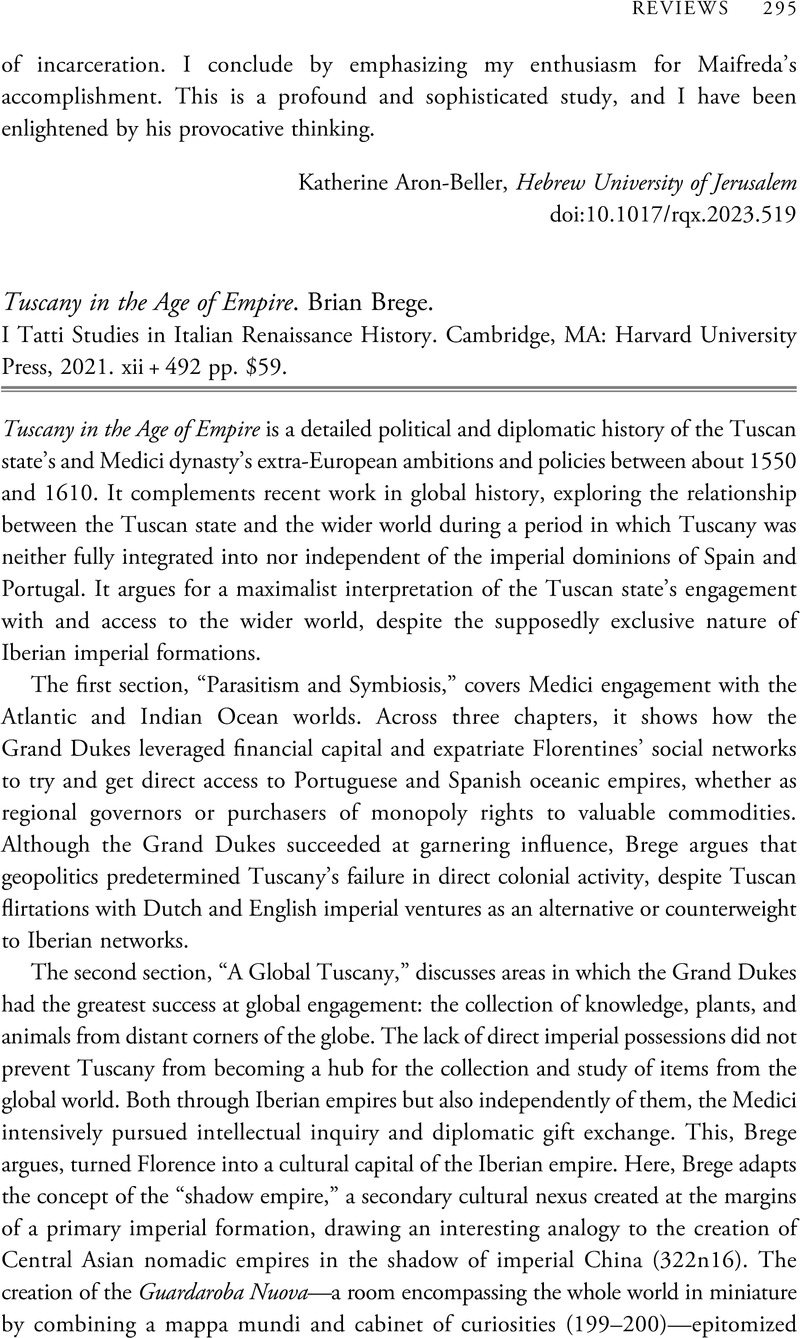No CrossRef data available.
Article contents
Tuscany in the Age of Empire. Brian Brege. I Tatti Studies in Italian Renaissance History. Cambridge, MA: Harvard University Press, 2021. xii + 492 pp. $59.
Review products
Tuscany in the Age of Empire. Brian Brege. I Tatti Studies in Italian Renaissance History. Cambridge, MA: Harvard University Press, 2021. xii + 492 pp. $59.
Published online by Cambridge University Press: 24 April 2024
Abstract
An abstract is not available for this content so a preview has been provided. Please use the Get access link above for information on how to access this content.

- Type
- Review
- Information
- Copyright
- Copyright © The Author(s), 2024. Published by Cambridge University Press on behalf of The Renaissance Society of America



